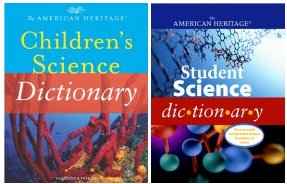Defining Planethood Additional Information
Share this:
- Share via email (Opens in new window) Email
- Click to share on Facebook (Opens in new window) Facebook
- Click to share on X (Opens in new window) X
- Click to share on Pinterest (Opens in new window) Pinterest
- Click to share on Reddit (Opens in new window) Reddit
- Share to Google Classroom (Opens in new window) Google Classroom
- Click to print (Opens in new window) Print
To find out more about defining what a planet is, go to www.jpl.nasa.gov/news/features.cfm?feature=1151 (NASA) or en.wikipedia.org/wiki/2006_redefinition_of_planet(Wikipedia).
You can learn more about NASA’s New Horizons mission to Pluto and the outer solar system at www.nasa.gov/mission_pages/newhorizons/main/index.html (NASA) and pluto.jhuapl.edu/ (John Hopkins University Applied Physics Lab).
The International Astronomical Union has a Web site at www.iau.org/HOME.2.0.html(IAU).
Gramling, Carolyn. 2006. Dwarf planet discord. Science News for Kids (Oct. 11). Available at http://www.sciencenewsforkids.org/articles/20061011/Note2.asp.
Sohn, Emily. 2006. Pluto and the plutons. Science News for Kids (Aug. 23). Available at http://www.sciencenewsforkids.org/articles/20060823/Note3.asp.
______. 2006. Xena’s mysterious sparkle. Science News for Kids (April 19). Available at http://www.sciencenewsforkids.org/articles/20060419/Note2.asp.
______. 2006. Sizing up Pluto’s moon. Science News for Kids (Feb. 22). Available at http://www.sciencenewsforkids.org/articles/20060222/Note3.asp.
______. 2005. Pluto’s new moons. Science News for Kids (Nov. 9). Available at http://www.sciencenewsforkids.org/articles/20051109/Note2.asp.
______. 2005. Solving a Sedna mystery. Science News for Kids (May 4). Available at http://www.sciencenewsforkids.org/articles/20050504/Note3.asp.
______. 2004. Icy orbs at the solar system’s edge. Science News for Kids (Dec. 1). Available at http://www.sciencenewsforkids.org/articles/20041201/Note2.asp.
______. 2004. Planets on the edge. Science News for Kids (April 7). Available at http://www.sciencenewsforkids.org/articles/20040407/Feature1.asp.
SciFiZone
The Name’s the Thing
http://www.sciencenewsforkids.org/articles/20060906/SciFiZone.asp
Books recommended by SearchIt!Science:
![[book]](https://www.sciencenewsforstudents.org/wp-content/uploads/2019/11/a1390_b1381.jpg) |
Ten Worlds: Everything That Orbits the Sun
Published by Boyds Mills Press, 2006.
This tour of the solar system features the newly discovered tenth planet (yet was published just before Pluto was demoted). The canyons of Mars . . . the volcanoes of Jupiter’s moon Io . . . the amazing rings of Saturn . . . the icy plains of Pluto—these are just some of the places readers will visit when they tour the sun’s planets. Astronomer Ken Croswell is your guide to these fantastic places and unsolved mysteries. |
Power Words
asteroid One of the millions of rocky objects that orbit the Sun, mostly in the region between Mars and Jupiter. Asteroids are smaller than planets. They can be as large as several hundred miles across and as small as a speck of dust.
Most asteroids orbit the Sun between Mars and Jupiter (in an area called the asteroid belt), but once in a while one comes close to Earth and even crashes into it. Scientists now believe that the dinosaurs died out because a big asteroid hit Earth about 65 million years ago. When it hit, it sent up a huge cloud of dust that blocked out sunlight, killing off lots of life.
Kuiper belt A region in the outer Solar System that contains thousands of small, icy objects.
planet An object in outer space that moves around a star, such as the Sun, and that is larger than an asteroid. A planet does not produce its own light but shines because it reflects the light of the star that it moves around. The nine planets of the Solar System are Mercury, Venus, Earth, Mars, Jupiter, Saturn, Uranus, Neptune, and Pluto.
Pluto The planet that is ninth in order from the Sun and usually the farthest in distance. Pluto is the smallest and the coldest planet in the Solar System, with a temperature on the surface of almost –400° Fahrenheit (about –240° Celsius).
Copyright © 2002, 2003 Houghton-Mifflin Company. All rights reserved. Used with permission.
